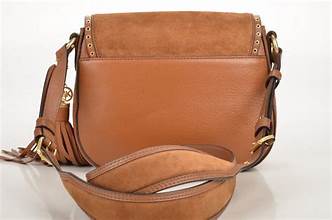
Whether you’re a seasoned cyclist or just starting out, one essential accessory you shouldn’t overlook is a bike saddle bag. These compact storage solutions offer convenience and practicality, allowing you to carry essential items with ease during your rides. From tools and spare tubes to snacks and personal belongings, bike saddle bags ensure you’re prepared for whatever the road or trail throws your way. In this comprehensive guide, we’ll explore everything you need to know about bike saddle bags, from types and features to tips for choosing the right one for your needs.
Types of Bike Saddle Bags:
- Under-seat Bags: These are the most common type of saddle bags, designed to attach neatly under your bike seat. They come in various sizes to accommodate different storage needs, from minimalist designs for carrying just the essentials to larger bags for longer rides.
- Saddle Roll Bags: Also known as saddle pouches or seat rolls, these bags wrap around the seat post and are secured under the saddle rails. They offer a sleek and compact storage solution, often preferred by cyclists who prioritize aerodynamics and aesthetics.
- Wedged-shaped Bags: These saddle bags have a triangular shape and fit snugly between the seat post and the saddle rails. They provide ample storage space and are popular among cyclists who need to carry larger items like clothing layers or extra gear.
Features to Consider:
- Capacity: Determine how much gear you need to carry regularly to select the appropriate size of the saddle bag. Consider factors like the length of your rides and the types of items you typically carry, such as tools, spare tubes, snacks, and personal belongings.
- Attachment System: Look for a saddle bag with a secure and easy-to-use attachment system that ensures stability while riding. Common attachment methods include Velcro straps, buckles, and quick-release mounting systems.
- Water Resistance: Opt for a saddle bag made from water-resistant materials or equipped with a rain cover to protect your belongings from moisture in unpredictable weather conditions.
- Durability: Choose a saddle bag constructed from robust materials like nylon or polyester, with reinforced stitching and durable zippers, to withstand the rigors of cycling over various terrains.
- Organization: Consider the internal organization features of the saddle bag, such as compartments or pockets, to keep your gear organized and easily accessible during rides.
- Reflective Elements: Look for saddle bags with reflective accents or loops for attaching safety lights to enhance visibility during low-light conditions, increasing your safety on the road.
Tips for Choosing the Right Bike Saddle Bag:
- Assess Your Storage Needs: Take stock of the items you typically carry during rides to determine the appropriate size and type of saddle bag for your needs.
- Consider Aerodynamics: If you’re concerned about aerodynamics or ride performance, opt for a sleek and minimalist saddle bag design that minimizes drag.
- Test Compatibility: Ensure that the saddle bag is compatible with your bike and seat post configuration, considering factors like seat post diameter and clearance between the saddle rails and rear wheel.
- Check Reviews: Research and read reviews from other cyclists to gauge the performance, durability, and overall satisfaction with different saddle bag models before making a purchase.
- Try Before You Buy: Whenever possible, visit a local bike shop to see and handle saddle bags in person, allowing you to assess their quality, features, and fit for your bike.